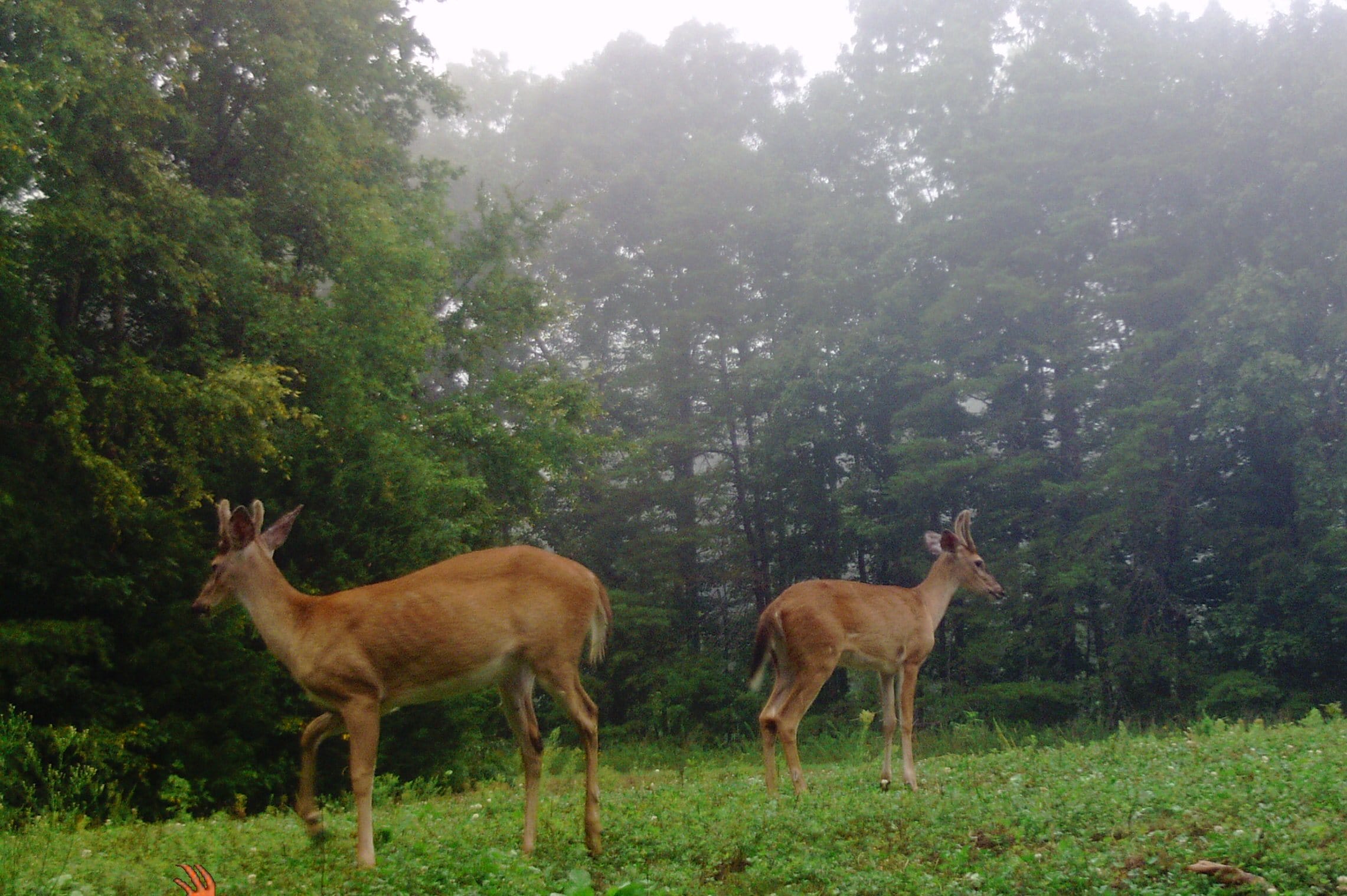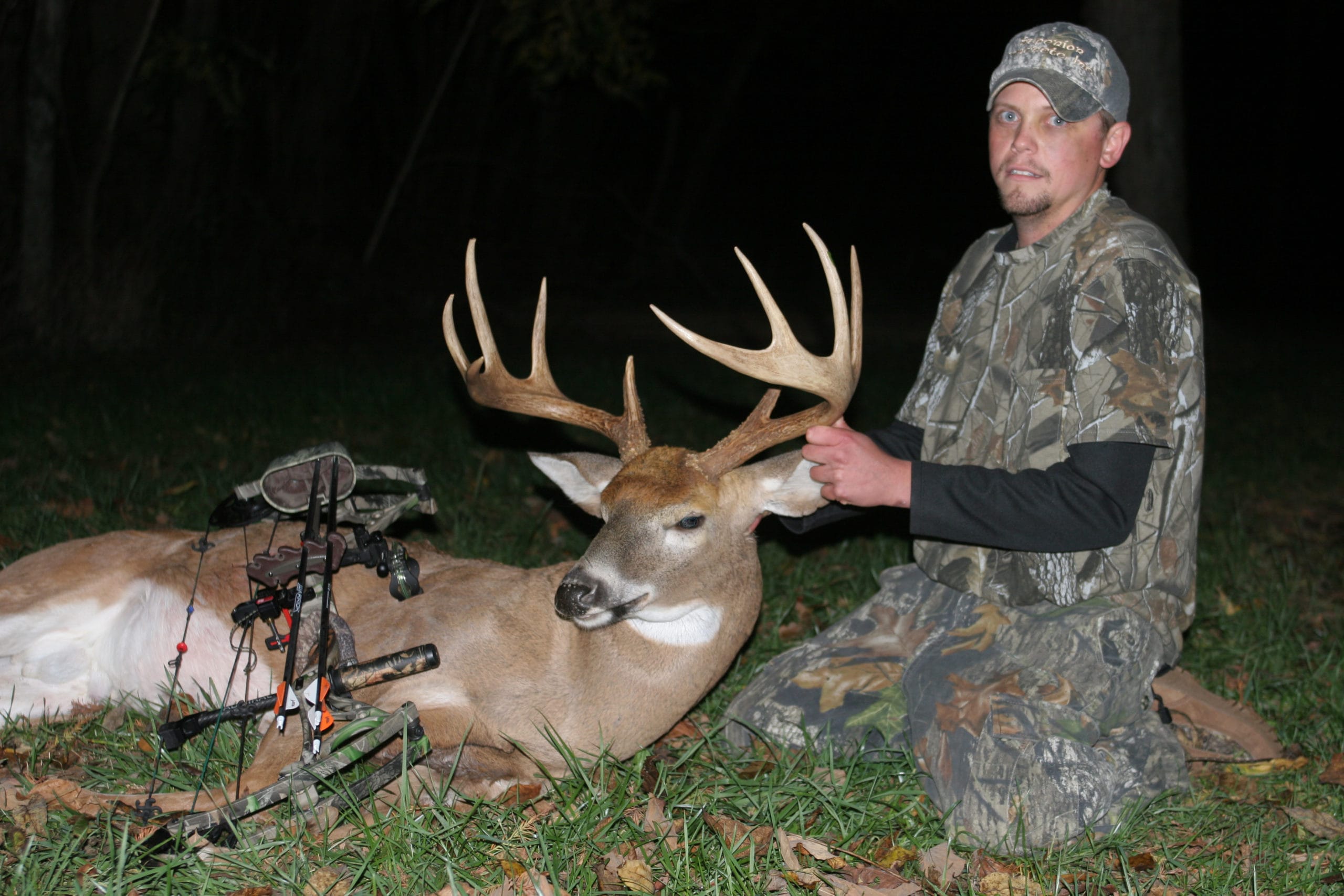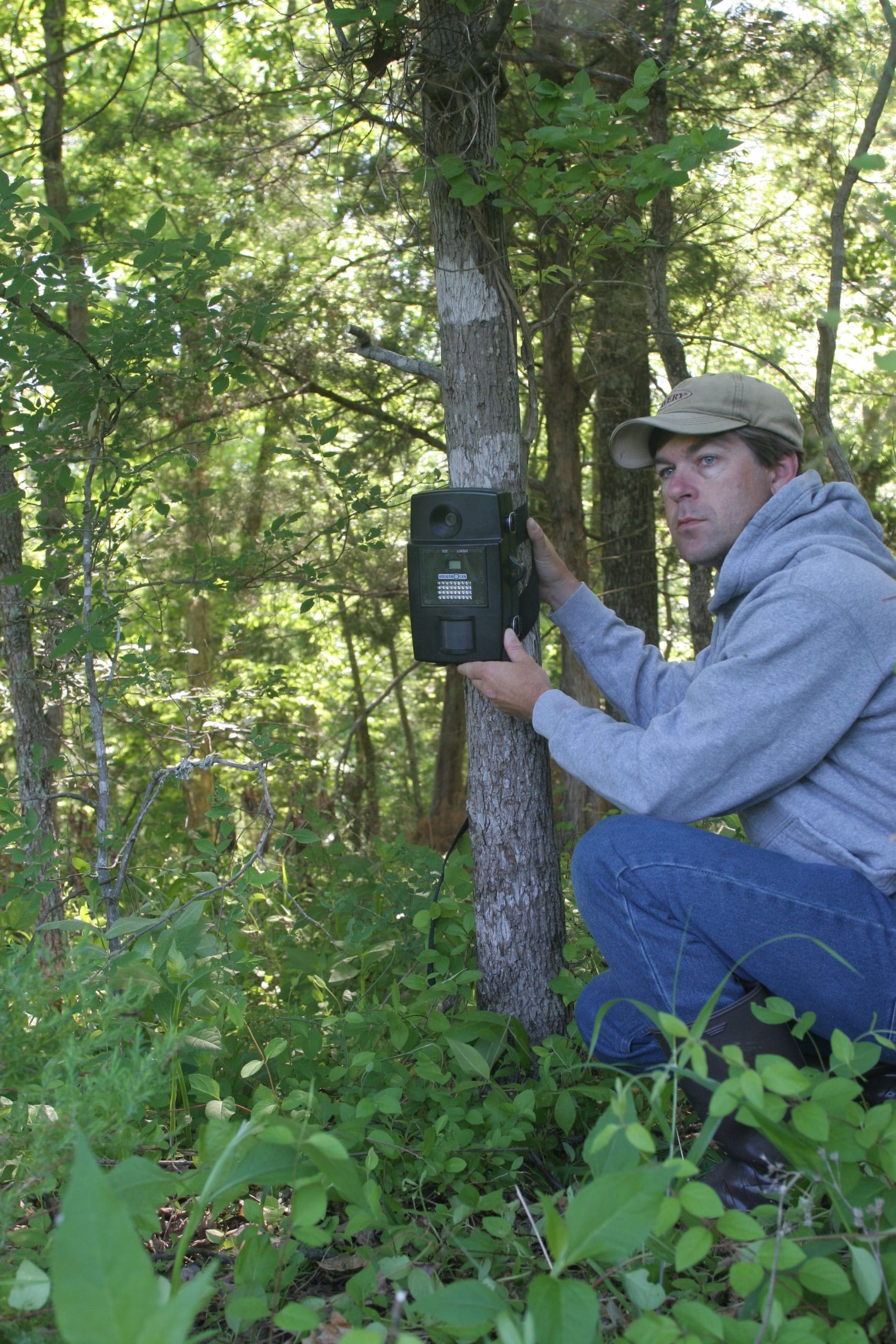by David Hart
Trail cameras have come a long way since they first hit the hunting scene a decade or more ago.

Trail cameras don’t just offer a glimpse into the life of undisturbed deer. They can help hunters have more success.
Back when trail cameras first came out, they were really nothing more than a novelty; a really cool, very interesting way to see what roamed the woods when a hunter was not there.
Trail cameras have come a long way. They don’t just show you what’s out there. They can help you better manage your deer herd by telling you exactly how many bucks and does you have. What was once an inexact science at best and a wild guess at worst is now a proven tool in your management toolbox.
Count Your Deer
The trick, says Ohio Division of Wildlife biologist Clint McCoy, is to put your camera over bait. Simply placing it along a field edge or a worn deer trail will capture deer, but it likely won’t photograph all of them. He and fellow biologist Peter Acker, who works for the Virginia Department of Game and Inland Fisheries, agree that corn is the best way to put deer in front of your cameras and that a camera placed on a bait site for 10 days will capture virtually every deer in the area.
Both biologists studied the use of trail cameras while they were graduate students at Auburn University and part of one of the world’s most successful research facilities on white-tailed deer. Their studies also revealed that one camera per 100 acres is usually sufficient.
“Any more and you will likely count the same deer multiple times at different bait sites,” says Acker.
Bucks are easy to count. They have unique antler characteristics that allow hunters to tell them apart. Antlerless deer, however, don’t have those identifying racks. McCoy and Acker agree the best way to determine antlerless deer populations is through extrapolation. For instance, if you have 40 “captures” of 10 unique bucks, that means you have 4-to-1 capture-to-individual ratio.

Finding and patterning trophy-class bucks is difficult, but a trail camera allows a hunter to scout more places to determine where to be hunting on opening day.
That ratio can be used to figure antlerless deer numbers. If you count 100 does in all your pictures, you likely have 25 does, based on the 4-to-1 photo capture ratio.
Hunt Them With A Camera
Seeing different deer and then counting them is one thing, but hunting them is an entirely different game. Trail cams can help with that, too. Most allow users to set the date, time, and even such features as moon phase, relative humidity and other details that may affect deer activity. Smart hunters can calculate that information into their hunting activity.
“I start monitoring trail cams in late August or early September, which is about a month before our bow season opens,” says veteran Indiana hunter Steve Reynolds. “That gives me time to figure out patterns, and it gives me time to figure out where to hang stands in relation to wind direction.”
Reynolds doesn’t just hang a trail cam and check it every couple of days and hope for the best. Instead, he’ll start by hanging it near a food source to see what deer are using it. He also looks at the time and he considers the specific location of each deer sighting. Once he finds a buck he wants to hunt, Reynolds will then start to learn the buck’s patterns.
“If a buck is only using the field at night, I’ll try to determine where he’s entering the field, and I’ll hang cameras along that trail,” he explains.

Hang and tend trail cameras only when conditions are favorable. In other words, hunt with your camera just as though you were hunting with a gun or bow, with minimal impact on a buck’s core area.
Bucks tend to be fairly predictable in late summer and early autumn. They’ll feed in the same fields and walk the same trails day after day. That’s why Reynolds will keep moving his trail camera until he catches the buck on film during legal shooting hours. If he gets the buck on camera several days in a row, he won’t enter the area until opening day.
When working a trail camera in a big buck’s area, it is important to keep human scent and disturbance to a minimum.
“I’m basically hunting that deer with a camera before I hunt it with a bow,” he says. “I only pull the card or move the camera in the middle of the day and only when the wind is favorable. I wear rubber boots and make sure to keep my activity to a minimum. I only check it every three or four days, and I get in and out quickly.”
Deer activity changes as food sources change and hunting pressure increases, but Reynolds won’t put his cameras away after opening day. Instead, he’ll use them to scout new locations and new food sources. He also uses cameras to monitor activity close to where he’s already hunting. If, for instance, a spot goes cold, Reynolds will place a trail cam over a nearby oak flat or on a different crop field.
“He still has to eat, and he will likely be on his feet during legal shooting hours at some time. A camera can really help me find-tune my hunting location,” adds Reynolds. “There’s no guarantee a buck will walk down a certain trail or step into a food plot when I want him to, but photos don’t lie.”
The Union Sportsmen’s Alliance website is designed to provide valuable articles about hunting, fishing and conservation for members of AFL-CIO affiliated labor unions and all sportsmen and sportswomen who appreciate hunting and fishing and want to preserve our outdoor heritage for future generations. If you would like your own story and experience from the outdoors to be considered for our website, please email us at USAmembers@unionsportsmen.org.



